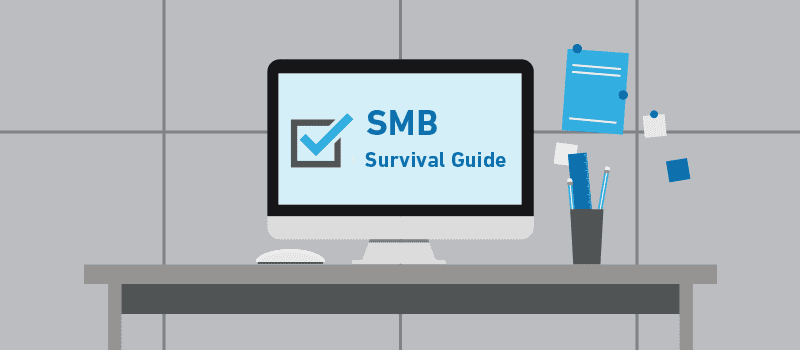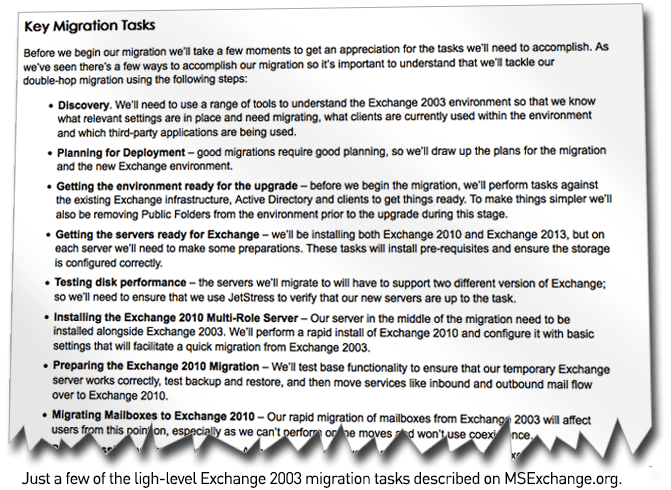It’s been a month since Microsoft ended support for Exchange 2003. I’ve seen quite a few articles and forum threads offering instructions for upgrading on-premises Exchange 2003 to Exchange 2010 or 2013. And from what I gather reading the forums, a lot of folks are finding it a troublesome experience.
I was looking at MSExchange.org recently, and I found this series of instructional articles specifically geared to helping small businesses migrate from 2003 to 2013. They’re very well written, and I applaud author Steve Goodman for taking the time to fully document the migration process. However — it’s DAUNTING.
Goodman doesn’t specify how many parts this series will end up including, but he did describe fifteen high-level tasks required to migrate from 2003 to 2013. By way of comparison, his series on migrating from Exchange 2007 to 2013 had 17 parts.
That’s a LOT of work. And given that he’s been working on this series for three months so far, it’s also a LOT of time.
If you’re in an SMB, Goodman has some advice for you.
“Often the problems encountered won’t be on the same scale as a larger organization, but a smaller organization often has less dedicated IT staff on hand or the advanced tools to remotely update or deploy software.”
That’s a really key point. Do you have IT staff available to do this work? And even if you do, can you afford to have them devoting so much time and effort to this process?
It’s more than just upgrading email servers
This is another point that Goodman doesn’t want you to forget: the tasks that face you aren’t just about upgrading your server. You’ve got to upgrade your users’ computers, too.
“When upgrading to Exchange 2013 we’ve got a double hop via Exchange 2010 to overcome, and we’ve got similar problems to consider with clients. If we need to upgrade Outlook 2003 clients, we can’t simply upgrade them to Outlook 2013 until they are moved away from Exchange 2003, nor can we use Outlook 2003 with Exchange 2013.”
This process is not a trifle. Your IT staff won’t be able to pull this off in a weekend. This is going to require some serious time and effort.
And that’s assuming everything goes perfectly. Any problems that come up will add more time.
The solution is simple: take your email to the cloud!
You’ve heard a million arguments for the cloud in general: no hardware to buy. No software to license. No maintenance to perform. No hidden costs.
But when you’re talking about the move from Exchange 2003 to Exchange 2013, there’s one more element: you don’t have to invest weeks of months into migration. Core Technologies’ experts will do it for you—at no extra cost. Not only can they save your business from experiencing downtime during migration, they can save YOU from experiencing a half-dozen weekends at the office.
What you get during an Exchange migration
An essential element of Core Technologies’ worry-free experience is the free Exchange migration performed by our expert team. It includes:
- 24×7 phone-based support throughout the process, including an initial consultation arranged within 48 hours of signing up for our service
- A clearly documented migration plan specific to you
- Customer control over pace and cut-over time
- Immediate accoextrunt provisioning
- Regular updates on progress




Recent Comments